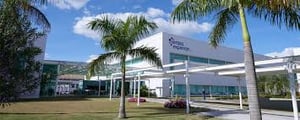H&T Group plc (LON:HAT) is the topic of conversation when Hardman and Co’s Analyst Mark Thomas caught up with DirectorsTalk for an exclusive interview.
Q1: You called your recent piece ‘Pawnbroking royalty, with strong, profitable growth’, what can you tell us about it?
A1: Founded in 1897, H&T Group is the UK’s leading pawnbroker, with 269 stores, and it has gained a strong pawnbroking market share in recent years. While it is growing ancillary gold buying and forex products, its core is pawnbroking and related retail services.
As other small-sum, short-term finance providers have withdrawn, the company’s well-capitalised, low-risk proposition has unique growth opportunities, with the pledge book up over 50% in 2022.
The lessening of legitimate competition at a time of heightened demand means this increasingly dominant franchise is expected to fuel strong earnings growth, with our 2024E EPS 4.2x 2021 levels. A progressive dividend follows (2024E yield nearly 5%).
Q2: You highlight the growth in the pledge book as a key driver to bottom-line growth, what is driving that growth?
A2: Looking at demand, most customers use pawnbroking loans to fund day-to-day living expenses – so demand for their loans is growing, because the cost-of-living crisis is putting greater pressures on customer cashflows. This positive dynamic has also been seen at a time of real constraints on the supply of short-term, small-sum credit.
Non-pawnbroking competitors in this space have withdrawn, in many cases killed by claims management companies (CMCs) – a risk to which they are only marginally exposed. Credit unions have moved to larger lending, and most branch-based, small-sum, short-term lenders have closed.
The company has also been growing its market share of pawnbroking by the acquisition of weaker rivals, and through a steady, organic store opening and refurbishment programme. At a time of growing demand, their long-term, competitive, positive position has never been stronger.
Q3: You expressed confidence in the resilience of the model to downturns, what can you say about that?
A3: In times of economic challenges, customer cashflows are constrained, and so the demand for pawnbroking is likely to rise. They should not be thought of as a lender, because there is no recourse to the customer – only the asset pledged. This gives it a very different risk and accounting impairment profile from lenders, and, looking through the unhelpful accounting, actual losses have been very small.
The bottom line is that, recognising that there was a slightly different business mix and accounting standard, their profits were robust through the early 1990s’ recession, the GFC and COVID-19.
Q4: What about non-pawnbroking businesses?
A4: On our numbers, pawnbroking will be just over 60% of group segmental profit. Nearly another 20% comes from retail, where it may surprise some listeners to learn that the company is the sixth-largest jewellery and watch retailer in the UK. They have multiple competitive advantages in this business.
Pre-owned jewellery is a low-cost source of stock and comes from pledged items not sold at auction and from customers choosing to sell items, rather than pledge them. The company’s pricing is at the good value for money end of the spectrum, giving downside resilience. They already has a secure store network – so the cost of the stores is spread over other products.
Another business is the scrapping of pledged items that have not been auctioned, and this generates a further 5% of profit. Leveraging the store network and its footfall also gives advantages in point-of-sale forex, which is currently 6% of profit but management expects to grow this strongly. Cheque cashing and money transmission generate modest amounts of revenue but lead to many more customers through the stores.
Q5: What about the risks?
A5: H&T Group’s customers are cash constrained. Their business money laundering and stolen goods risk is above average, but our detailed review of their controls shows good control.
We believe sentiment to the industry is a specific risk, and the company has a strong, ongoing communication programme to address what are often outdated or simply incorrect assumptions.
Inflation risk to the cost base is also a specific short-term consideration, but they have many fixed costs, and we expect strong operational leverage from the business growth in our forecasts.








































